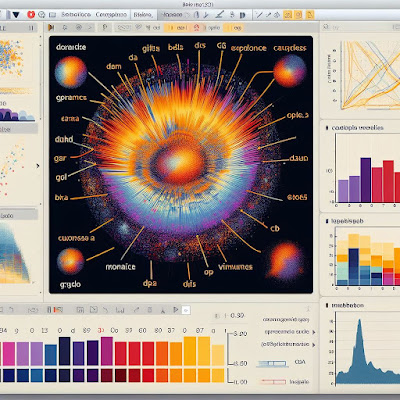How to Read a Heatmap in RNA-Seq: A Comprehensive Guide
Heatmaps are powerful visual tools for interpreting RNA-Seq data. They allow you to explore gene expression patterns across samples, identify clusters, and uncover underlying biological insights. In this article, we’ll demystify heatmaps and guide you through the process of reading and interpreting them effectively.
Table of Contents
- Understanding Heatmaps
- Preparing Your Data
- Creating a Basic Heatmap
- Interpreting Heatmap Colors
- Identifying Clusters
- Customizing Heatmaps
- Practical Examples
- Resources and Further Reading
1. Understanding Heatmaps
Heatmaps display data in a grid format, where each row represents a gene, and each column represents a sample. The intensity of colors within each cell reflects changes in gene expression relative to a reference point (e.g., control sample). Darker colors indicate higher expression, while lighter colors represent lower expression.
2. Preparing Your Data
Before creating a heatmap, ensure you have:
- Normalized Counts: Obtain a file of normalized RNA-Seq counts (normalized for sequencing depth and composition bias).
- Differentially Expressed Results: Identify genes with significant changes (e.g., from DESeq2 or edgeR analysis).
3. Creating a Basic Heatmap
Use tools like R’s heatmap.2 or Galaxy’s heatmap2 to generate your heatmap. Input your normalized counts and select relevant genes. The resulting heatmap will display expression patterns across samples.
4. Interpreting Heatmap Colors
- Red: Upregulated genes (higher expression).
- Blue: Downregulated genes (lower expression).
- Intensity: Darker colors indicate stronger expression changes.
5. Identifying Clusters
Look for gene clusters (groups of similar expression patterns). Clusters may represent co-regulated genes or biological pathways.
6. Customizing Heatmaps
Adjust parameters like color scales, clustering methods, and dendrograms. Experiment to find the most informative representation.
7. Practical Examples
Explore real-world datasets:
- Mammary Gland Study: Compare basal and luminal cell expression during pregnancy and lactation1.
- Your Own Data: Apply these principles to your RNA-Seq results.
8. Resources and Further Reading
- Galaxy Training Network: Heatmap Tutorial
- ComplexHeatmaps Tutorial
- EBI Functional Genomics Course
Remember, mastering heatmap interpretation takes practice. Start with simple examples, explore different tools, and unlock the hidden patterns in your RNA-Seq data! 🧬🔍
Feel free to dive deeper into the provided resources for hands-on experience and expert insights.
Certainly! Let’s dive deeper into understanding heatmaps in RNA-Seq analysis. 🧬🔍
Practical Examples of Heatmap Interpretation
1. Mammary Gland Study: Basal vs. Luminal Cells
In a fascinating study, researchers analyzed RNA-Seq data from mammary gland tissue during pregnancy and lactation. They focused on basal and luminal cells, two distinct cell types within the mammary gland. Here’s how they approached heatmap interpretation:
Data Preparation:
- They obtained normalized RNA-Seq counts for both cell types across different time points.
- The dataset included genes associated with mammary gland development, milk production, and immune response.
Creating the Heatmap:
- Using R’s
heatmap.2, they generated a heatmap with genes as rows and samples as columns. - The color scale ranged from blue (downregulated) to red (upregulated).
- Using R’s
Interpreting the Heatmap:
- Clusters emerged:
- Cluster A: Genes highly expressed in basal cells during lactation.
- Cluster B: Genes upregulated in luminal cells during pregnancy.
- Cluster C: Immune-related genes showing dynamic expression changes.
- Clusters emerged:
Biological Insights:
- Basal cells play a crucial role in milk production, explaining their high expression during lactation.
- Luminal cells undergo significant changes during pregnancy, likely related to mammary gland remodeling.
- Immune-related genes highlight the gland’s response to physiological shifts
2. Your Own RNA-Seq Data: A Hands-On Approach
Now, let’s apply these principles to your own RNA-Seq results:
Data Exploration:
- Load your normalized counts into R or Python.
- Identify genes of interest (e.g., differentially expressed genes).
Heatmap Generation:
- Use the same tools (e.g.,
heatmap.2or Python’sseabornlibrary). - Customize parameters (color scales, clustering methods) based on your data.
- Use the same tools (e.g.,
Color Patterns:
- Look for patterns:
- Are certain genes consistently upregulated or downregulated across samples?
- Do specific samples cluster together?
- Look for patterns:
Biological Context:
- Consult gene annotations and literature.
- Understand the functional roles of differentially expressed genes.
Resources for Further Learning
- Galaxy Training Network: Heatmap Tutorial
- ComplexHeatmaps Tutorial
- EBI Functional Genomics Course
Remember, practice makes perfect! Explore diverse datasets, experiment with visualization tools, and unravel the intricate world of RNA-Seq through heatmaps. Happy analyzing! 🌟
Feel free to ask if you need more examples or have specific questions! 😊









0 Comments